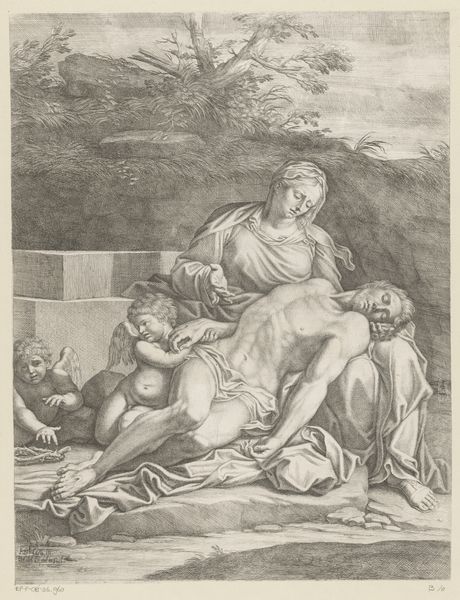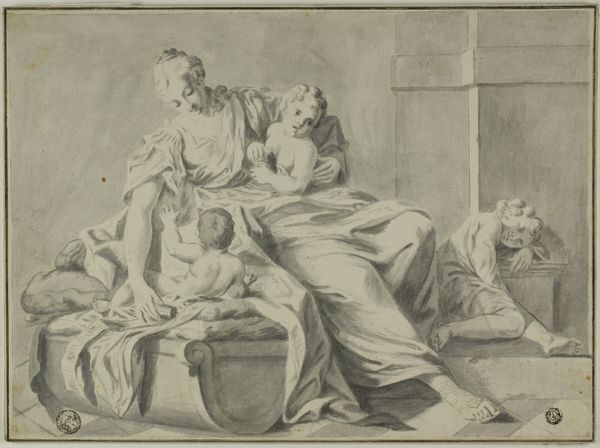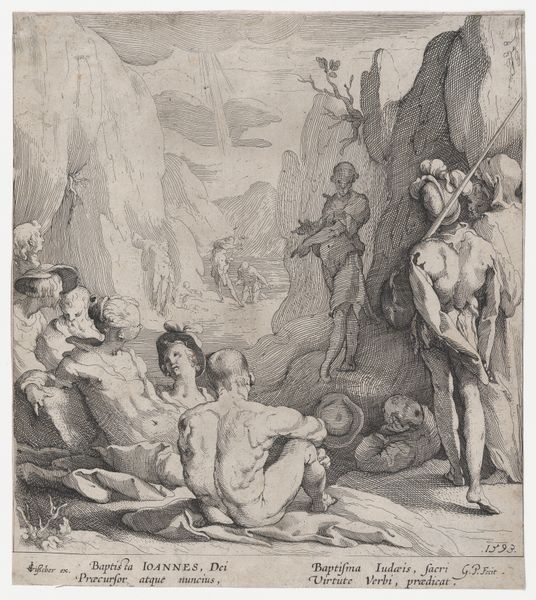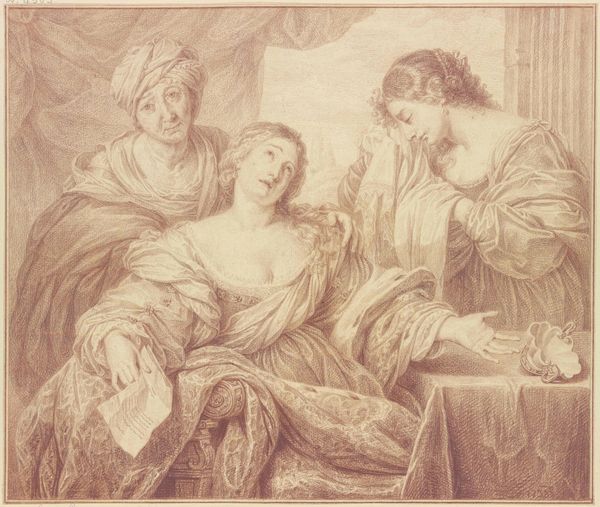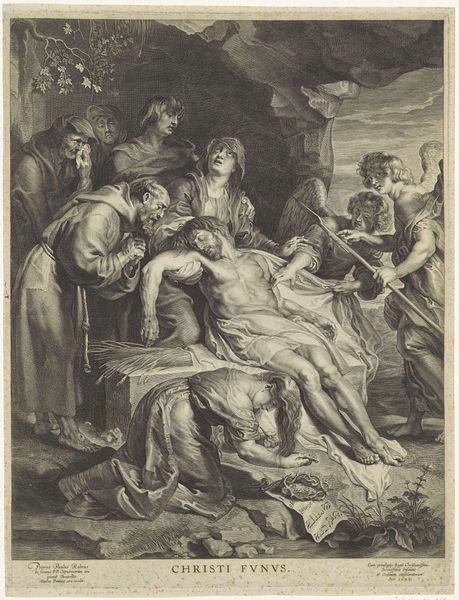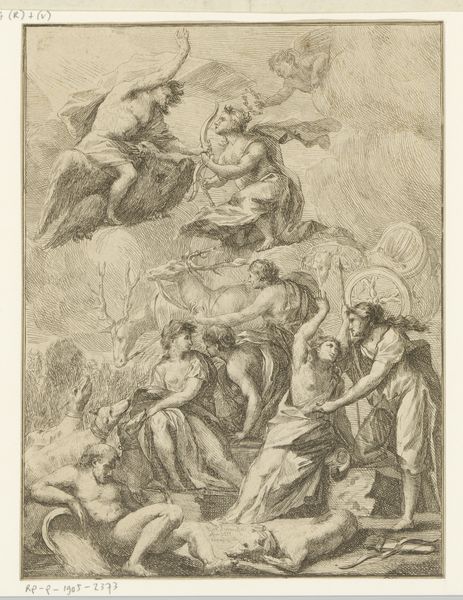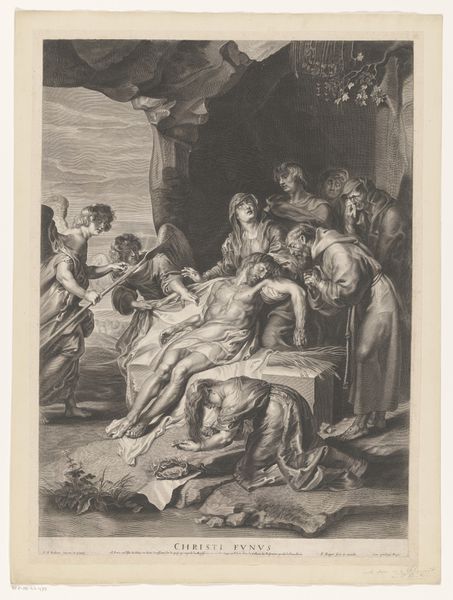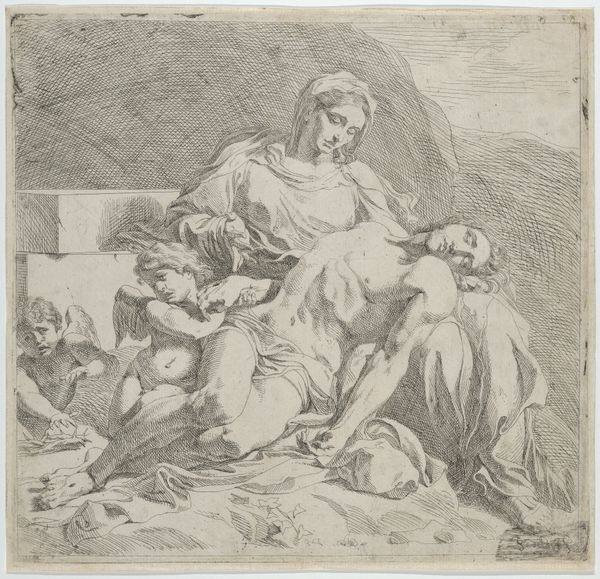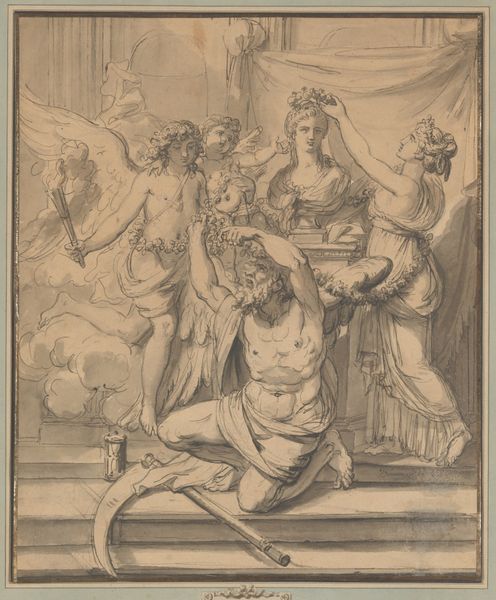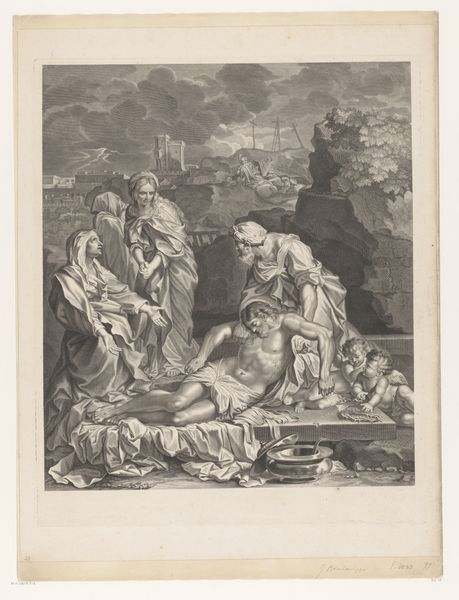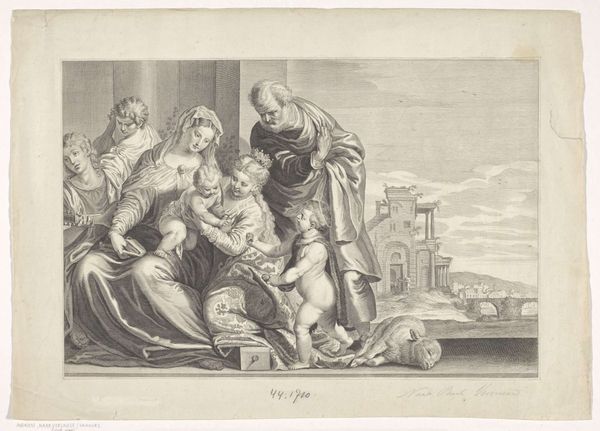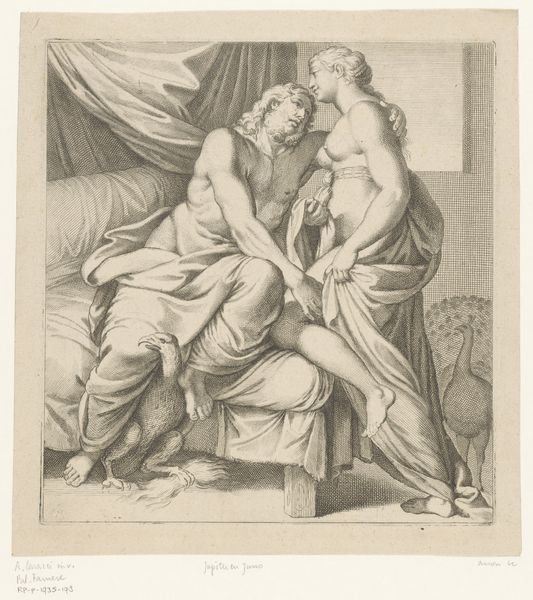
Mothers lamenting after the Massacre of the Innocents 1751 - 1814
0:00
0:00
Dimensions: 291 mm (height) x 245 mm (width) (bladmaal)
Curator: I find the immediate effect of this drawing quite overwhelming. The grief depicted feels so raw, so visceral. Editor: Indeed. We're looking at "Mothers Lamenting after the Massacre of the Innocents" by Henry Tresham, likely created between 1751 and 1814. It’s currently housed at the SMK, the Statens Museum for Kunst. Tresham rendered it with ink and drawing. The composition undeniably commands attention. Curator: It’s difficult to ignore the potent theme: the vulnerability of women and the unspeakable trauma of child loss. You feel a surge of rage but, above all, heartbreak. Considering that this artwork depicts an act of femicide, how much does this historical context inform your reading of the piece? Editor: Critically. We have to recall that such portrayals frequently served propagandistic or didactic purposes. This image, no matter how affecting, operates within a socio-political framework where power, representation, and gendered expectations play dominant roles. We also shouldn't overlook that Tresham belonged to the artistic circles that favored history painting. Curator: Absolutely. I think that the composition makes effective use of classical motifs to emphasize suffering and heighten the drama. In a broader scope, this piece reflects patriarchal societies. Editor: Certainly. How do you see its potential resonance today in our conversations around reproductive rights and violence against women? I agree, in terms of cultural history, the systematic and targeted elimination of children points to deeper societal structures that disempower women, particularly marginalized communities. Curator: Yes, this scene could be paralleled with similar atrocities happening worldwide right now; from domestic disputes that end with filicide, to regions of open warfare that cause infanticide through malnourishment or injury. In these communities, what can an image like this possibly hope to impart? What dialogue can we encourage with those in our community and further afield that can improve education? Editor: That’s an ethical challenge all cultural institutions face when confronting images with such enduring, brutal resonance. Thank you, these questions challenge the social role of historical artworks like this piece in relevant new ways. Curator: My pleasure, let's make for the next room now.
Comments
No comments
Be the first to comment and join the conversation on the ultimate creative platform.
